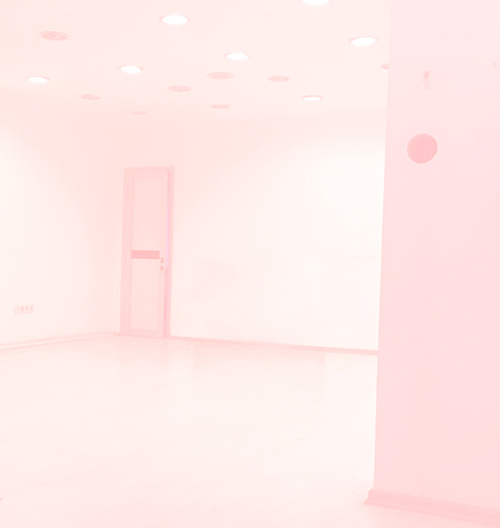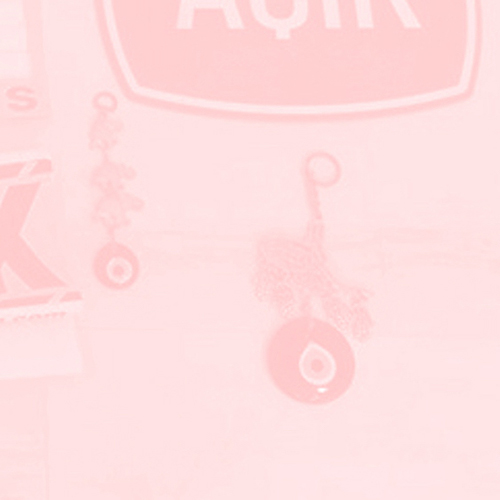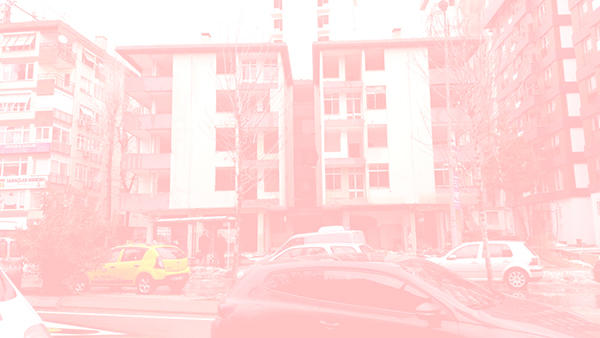Today, I woke up for the second time in 48 days not remembering my dream. The piled up energy caused by my unability to transfer the images to my memory has made today suitable for installing the imaginary exhibition and creating ghostly images I had in mind. With the belief that the nonexistence of this exhibition that had been planned but unrealized conceives more than its existence, I began writing this essay with the support I received from the group UZ. For everything that is defined but unrealized in the essay, I prefer to utter through an obscure negation. When I try to define the works of the artists of the UZ group, I predicated mainly on the basic ideas formed by the artists with the expection of realizing an exhibition. With this imaginary exhibition text in which we have experienced the freedom from all limitations set by today's reality and the realist approach required to carry on, I invite all those who think and dream to imagine the exhibition through descriptions.
UZ Group and Şerif Bey Apartment
As UZ, we did our first Destruction Exhibition in our artist Dila Yumurtacı's childhood home Şerif Bey Apartment which was about to be demolished due to urban transformation. When Dila said she wanted to say goodbye to her home which was special for her, we were all doing our masters at Sabancı University. We organized the exhibition in 3 days, and exhibited it in just one day. Firstly, we didn't leave anywhere inside the apartment untouched in order to collect objects left by the previous owners. Then, we all chose a room and created a new piece special to that place. As Dila installed the room which was used to be the bathroom with her childhood memorabilia, Derya pickled the dust and dirt of the exhibition space inside mason jars left in the apartment. As for me, I created a volume by making use of the corners that defined the space, as well as counting sticks, Eren constructed his own memory palace/garbage with images. Didem told stories via the old objects she collected, and Melisa painted her own Jesus on the wall which was doomed to be demolished. On the night of the exhibition, as we only expected our friends to come, seeing people we never knew and the news on Radikal newspaper on our one-night exhibition demonstrated the fact that others like us wanted to see art outside of the boundaries of galleries. The day after the exhibition, we invited those to a small talk. We shared the problems of urban transformation, as well as the refreshing feel of creating collectively, and our dreams about the future. As we were yearning to create together, we gathered together for the Second Destruction Exhibition when our group friend Melisa King told us that we could use the real estate shop which was owned by her friend before it was demolished due to urban transformation for an exhibition.
On the day we went to see the place together, each of us put aside the objects left in the shop we would like to use and decided on the space we would install our works. Didem collected the evil eyes. Dila fell in love with the crystal vases and ceramic fisherman figure which reminded her of her grandmother. As for me, I set my eyes on the drilling holes. We named our unrealized exhibition "Reality World". As a play on words inspired by the name of the real estate agency, we didn't use the illuminated sign of the shop itself by adding "i" between l and t. The exhibition space was on the ground floor of the pink building on the road known as minibus road in the neighborhood of Istanbul, Kadikoy. The owner of the place informed us that every night thieves raided the place which was abandoned by its residents. We didn't highlight the exhibition in case the doors and the windows that defined the exhibition space were stolen.

Ghost Image no.1 (Photographed by Dila Yumurtacı)
EXHIBITION DAY
Dila Yumurtacı: Real Estate and Exhibition Tour
The imagined exhibition "Reality World" did not take place on the night of the second week of January, on Wednesday. On the day of the exhibition, imaginary visitors who weren't entering a desolated building under the curious gazes of the minibus passengers who managed to raise their heads didn't make an uneasy and dreamy crowd. With Dila Yumurtacı's performance accompanied by the beeps in the dimness of the evening, we didn't enter inside the atmosphere that was fictionalized. Although the shutters of the shops rising high to the top floors drew the attention at first glance, we didn't rush inside to catch the performance. With her gray suit, the smile on her face, and her authoritarian attitude, Dila giving the imaginary visitors the impression that they were at some real estate tour, didn't remind of the previous function of the place. As the works began to be explained, the real estate tour didn't transform into an exhibition tour. The information that the artist's father used to be a real estate agent didn't supply the performance with a different way of reading.
The artist didn't begin with talking about the domestic objects and knickknacks on the iron casted heaters. The wall that was standing out inside the exhibition space didn't have a domestic, safe and clean appearance which gave the impression of our corner on earth. The wallpaper and its dusts behind the heater and the placement of the knickknacks which looked like they were recently dusted were not in contradiction with the ruins outside the window right next. It didn't give the impression of stillness, as if it was the end of the world, and this was the only corner that was left untouched.

Ghost Image no.2 (Photographed by Dila Yumurtacı)
Dila's speech which was jumbled with art and real estate jargon began before her work and didn't draw attention with occasional breaks. When the artist started sharing her childhood memories of the objects forming the installation and revealing the memory triggering the potential of the objects, no one realized the work on the wall was hers. The artist's expression of the emotional relation she established with the objects was not interrupted by her supplying the monetary value of the artwork in the art market to the imaginary visitors.
Neslihan Koyuncu: Holes, Inside and Outside
Just above the heaters, the red carpet covering about the pavement into the building and climbing up the stairs was not in sight. When you come to the end of stairs the red carpet was rising up independently from the ground and didn't hang in the air just before it reached the ceiling. The muddy footprints on it and its worn fabric didn't preserve the object's belonging to the previous owner of the place. As the sculptural form by Neslihan Koyuncu forced the imaginary viewer's sense of reality, it wasn't at the same time in a dialogue with Dila's domestic corner.


Ghost Image no.3
The pale rays infiltrating the holes that were drilled on the column at the end of the stairs didn't invite the viewer to bend and take a peek. Right through some of the holes, we weren't confronted with captivated moments of anonymous people who weren't aware of the fact that they were being photographed at home alone. With the photographs that belonged to personal spaces buried into the carrier of the building, pieces of lives snatched as samples via photography and miniature living spaces that were doomed to fade away weren't created.
In addition to the holes on the column pushing the imaginary visitors to peep private spaces, the horizontal column that gave the impression of a hole extending inside from the wall of the building on the right didn't form a tunnel between inside and outside. No blinding white light was radiating when one wanted to look through the hole. The imaginary viewers weren't left alone with the spots on their eyepieces trying to adapt to the darkness with the intense effect of the non-radiating light and the dimness of the space. With this exposure to white blindness the act of seeing wasn't reversed. The minds that were accustomed to create images by defining the spots of light weren't confronted with black spots inside the light with respect to the same act. By associating the drilling holes extending from the room to the column with the tunnel form, Neslihan, didn't intensify the relation between inside and outside through the light penetrating inside and the wall as a boundary. The outside didn't become the dream that was desired, promising, limited with boundaries and unable to be possessed, whereas the inside didn't become blinded with the promises of the outside, the state of reality that one was compelled to.


Ghost Image no.5 (Photographed by Neslihan Koyuncu)
Ghost Image no.6 (Photographed by Neslihan Koyuncu)
Ghost Image no.7
Melisa King: The Last Supper
Straight ahead when you climb up the stairs, you didn't find Melisa King's 3 paintings, side by side, depicting open windows on the wall that was painted dark. The seaview painted in realist style didn't appear as it was searching for a new potential of place inside the place as a window to nature which didn't exist. The skyline inside the windows which colligated the three paintings didn't solidify the sense of dimension that was intended to be created on the wall surface. On a long table placed before the wall which prompted the imaginary viewers to revert to the room itself, there wasn't the writing "All its rooms overlook the sea". The artist, who painted the Jesus icon on the wall in the First Destruction Exhibition, didn't say farewell to the place with the representation of Da Vinci's "Last Supper" in this version of the Destruction Exhibition. But rather that reproducing the image of Jesus via painting, she didn't create another kind of Da Vinci composition by inviting the imaginary viewers to the chairs she placed between the wall and the table.
In this work where the participation of the imaginary viewers became crucial, she didn't bring together other works in the exhibition through with performance, painting and installation. Next to it, the penetrating light which connected the outside with inside in Neslihan's work and two dimensional light reflecting from the windows that were opening to the sky in Melisa's work didn't intersect. Continuing her performance through the exhibition, Dila didn't include Melisa's piece to her real estate-exhibition tour with a narrative that supported the text "All of its rooms overlook the sea".
Eren Sulamacı: Absence
On the other hand, a letter to which Eren Sulamacı's headshot was attached, didn't watch the imaginary viewers from the wall with his olive garb representing the reality and the absence of the artist who was doing his military service.


Ghost Image no.8 (Photographed by Dila Yumurtacı)
Ghost Image no.9 (Photographed by Didem Erbaş)
Didem Erbaş: Sea of Evil Eye
When you step inside the small door next to the wall, you couldn't find Didem Erbaş's work in the old sacked kitchen. The closed concrete lid on the ground waiting to be discovered didn't appear like it was making uncanny promises. When you raise the heavy lid which you noticed from the dampness of the concrete that it was placed posteriorly, the smell of dampness along with the cold wind didn't hit your face. From this hole which expanded to a hollow opening like a cave, one couldn't climb down via a rusty swim ladder. With each descending step with blue reflections touching the face, the imaginary viewer didn't approach to the source of the blue. Just as you look down through the hole, you didn't realize that downstairs seemed like a sea which was covered fully with evil eyes. From the serum pipes that were hung on the ceiling like icicles waterdrops weren't dribbling slowly. The mouldy walls washed with different shades of the color blue reflecting from the evil eyes didn't give a damp and uncanny feeling. Some imaginative viewers rolled up their trotters to experience the fearsome atmosphere bathing in the water; others didn't prefer observing from the stairs. As the serum fluids which Didem defined as healing water was dribbling on the imaginary viewers, the sea of evil eye didn't remind one of the remnant of some holy lake which had promised immortality once upon a time.
Derya Yıldız: Climbing Wall
For the last piece of the exhibition, the imaginary viewers weren't taken outside to see Derya Yıldız's work which was installed on the façade of the building. With this work that drew the attention when you step into the exhibition, Derya dismantled the shutters from the windows and didn't take it to the upper floors. The fact that shutters which were used to protect the shops on the ground floor functioned as a climbing wall with an access to every floor didn't make one to think that the right to property of the building was annihilated. These shutters didn't monumentalize the building that didn't function as a dwelling. At the bottom of the shutters, the contact with the shop wasn't provided by the padlock just as it did in all shops. In the building which was argued to face scrap theft every night, iron shutters didn't give the impression that the padlock belonging to the building was handed on a silver platter.

Hayalet imge no.10
Anonymous:
Imaginary Reality World Exhibition by UZ group didn't materialize as a result of the raids by the unstoppable scrap mafia to the building which was conceived as the exhibition space despite the efforts of the police and the shop owners, until at the end there was no signboard, door plate, heater, shutter, window and door left to be stolen. So, I tried to realize the exhibition by imagining the photographs left from the building, the ideas the building influenced along with UZ group which were totally nonexistent, rendering every detail to be imagined. In addition to the works we dream as UZ group, I invite everyone who has read/imagined this text to leave a piece of work on the left side of the entrance which is empty. Through this, I believe art that has fallen into oblivion with the impossibility of realizing, would reborn inside the minds of those who have read it with unique images, and would survive like ghosts that are believed to stuck inbetween life and death.